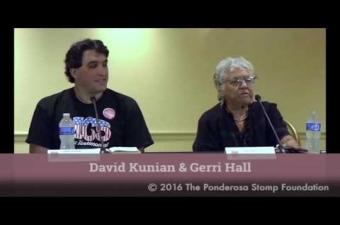Dew Drop Inn
2836 LaSalle StreetNew Orleans LA 70115
The Dew Drop Inn, the creation of businessman Frank Painia, was a barbershop, restaurant, hotel, lounge, and nightclub at the heart of Black society and culture in New Orleans from the 1940s through the 1960s. As a hub of the Chitlin Circuit–the network of African American performance venues–the Dew Drop attracted the brightest stars in African American entertainment and in turn helped launch local talent to national acclaim as recording and touring artists.
Hearkening back to the vaudeville era, floorshows at the Dew Drop featured dancers, comedians, and novelty acts as well as a house band that played the hits of the day and backed a variety of artists. Emcees for these shows included Joseph “Mr. Google Eyes” August as well as an openly gay “female impersonator” known as Patsy Vidalia, who performed in evening gowns.
Every New Orleans R&B musician of note passed through the Dew Drop, and many, like Roy Brown, can trace their break in the music business to performances on its stage. Musicians gigging elsewhere often congregated at the Dew Drop after hours, leading to jam sessions that could continue past sunrise the next day.
For Black musicians passing through New Orleans on tours of the segregated South, the Dew Drop was a welcoming community center as well as a place to perform. Artists from out of town, like Ray Charles and Little Richard, spent time in the hotel. The lounge attracted some white customers, and the New Orleans Police Department occasionally conducted raids to uphold segregation laws (though Painia challenged this practice in court).
Between performances, musicians gathered at the Dew Drop to eat, socialize, rehearse, and find work: Painia ran a booking agency from the club, sending bands to perform at other venues across the region. For 10 cents they could read the latest gossip from the scene in an illustrated newsletter published by R&B artist Earl King. By the late 1960s, integration had diffused the Dew Drop’s audience, and the club closed around the time of Painia’s death in 1972.
Painia’s family kept the hotel running until Hurricane Katrina in 2005. Unable to afford repairs after the flood, they eventually sold the property to a local developer on the condition that he revitalize it in a way that honored its legacy. The new Dew Drop Inn–once again a nightclub, restaurant, and hotel–opened in 2024 with a performance by Irma Thomas, 63 years after her last appearance there.
Read more about the roots of rock ‘n’ roll in New Orleans.
Videos

The first in a series of videos by A Closer Walk chronicling the reopening of the Dew Drop Inn in 2023.
Video by A Closer Walk and WWOZ.
The first in a series of videos by A Closer Walk chronicling the reopening of the Dew Drop Inn in 2023.

Part Two in our series chronicling the reopening of the Dew Drop Inn in 2023.
Video by A Closer Walk and WWOZ.
Part Two in our series chronicling the reopening of the Dew Drop Inn in 2023.

Clips from the 2011 Ponderosa Stomp Conference panel “Sirens of the Bayou: Gulf Coast R&B Queens” with Carol Fran and Lavelle White on their days at the Dew Drop.
Video © The Ponderosa Stomp Foundation.
Clips from the 2011 Ponderosa Stomp Conference panel “Sirens of the Bayou: Gulf Coast R&B Queens” with Carol Fran and Lavelle White on their days at the Dew Drop.

Clips from the 2011 Ponderosa Stomp Conference panel "The Things That I Used To Do: The Story of Guitar Slim" featuring stories set at the Dew Drop.
Video © The Ponderosa Stomp Foundation.
Clips from the 2011 Ponderosa Stomp Conference panel "The Things That I Used To Do: The Story of Guitar Slim" featuring stories set at the Dew Drop.

Clips from the 2010 Ponderosa Stomp Conference panel “Gerri Hall with Rick Coleman" describing the view from behind the bar and on the stage of the Dew Drop.
Video © The Ponderosa Stomp Foundation.
Clips from the 2010 Ponderosa Stomp Conference panel “Gerri Hall with Rick Coleman" describing the view from behind the bar and on the stage of the Dew Drop.
Images
































